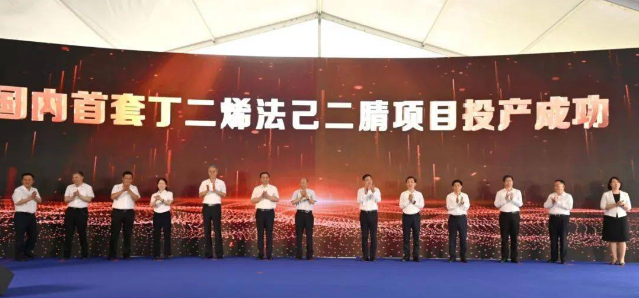China's first butadiene-based adiponitrile project

On August 1, Zibo Qixiang Tengda Chemical Co., Ltd. announced that the 200kt/year adiponitrile (ADN) plant of the nylon 66 new material project phase I, invested and constructed by Tianchen Qixiang, has successfully gone through the whole process, started up and yielded high-quality adiponitrile.
This project breaks the monopoly on adiponitrile technology, and will improve the nylon 66 industry chain and related industry groups, and promote the long-term, safe and healthy development of high-end nylon industry in China.
About Tianchen Qixiang
In July 2019, Qixiang Tengda and China Tianchen Engineering Co., Ltd., a wholly-owned subsidiary of China National Chemical Engineering Co., Ltd., reached an agreement on the joint investment, construction and production of high-end new material nylon 66, and initiated the establishment of Tianchen Qixiang. They planned to invest the construction of a nylon 66 new material industrial base with an annual output of 1 million tons. The project is divided into two phases.
The first phase of the project covers an area of 1,800 mu, using butadiene and adipic acid as the main raw materials. It is designed to produce 200,000 tons/year of adiponitrile, acrylonitrile, hydrogenation, nylon 66 salt and chips.
ADN industry development in China
Chen Huimin, deputy director of the consulting project of China National Chemical Information Center, said that in 2019, China realized the industrial production of adiponitrile. In 2021, China domestic capacity of adiponitrile was only 100,000 tons, and the annual output and consumption were 65,000 tons and 312,000 tons respectively, with the supply still highly dependent on imports. In the next 5 to 10 years, China's adiponitrile production capacity will see explosive growth, reaching 1.32 million tons/year by 2025 and 1.87 million tons/year by 2030.
The downstream of nylon 66 mainly include engineering plastics, synthetic fibers, etc. Among them, the end applications of engineering plastics mainly include automobiles, electrical and electronic, industrial and machinery, consumer goods and household appliances.
Chen Huimin said that in the past five years, the demand for nylon 66 in the automotive and synthetic fiber markets has shown a downward trend, and its consumption in other applications has grown slowly, resulting in a negative growth in its global consumption. In the future, driven by the growth of upstream raw material production capacity, nylon 66 is expected to partially replace nylon 6 in the fields of engineering plastics and industrial fibers, thus ushering in a faster market growth.